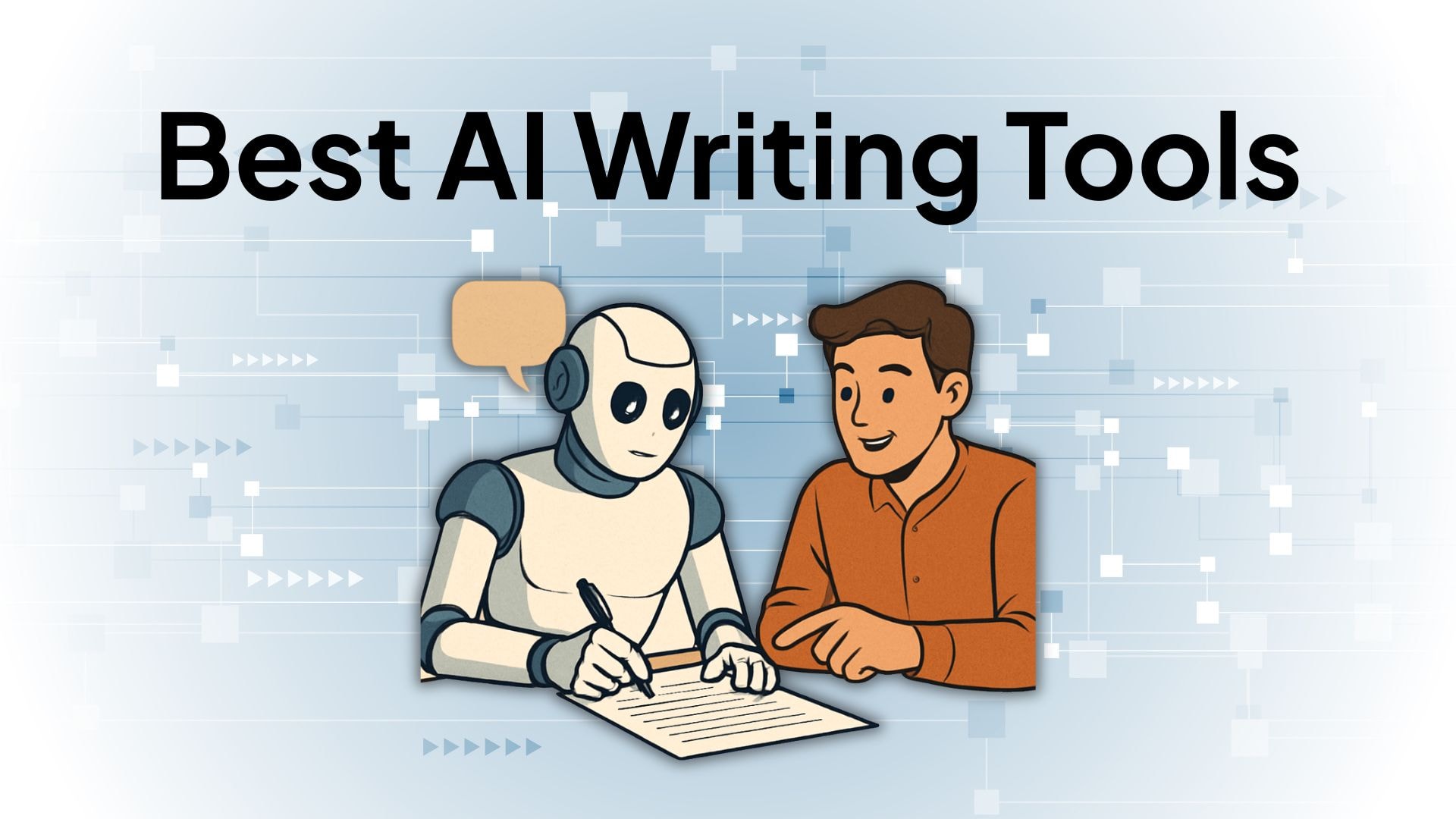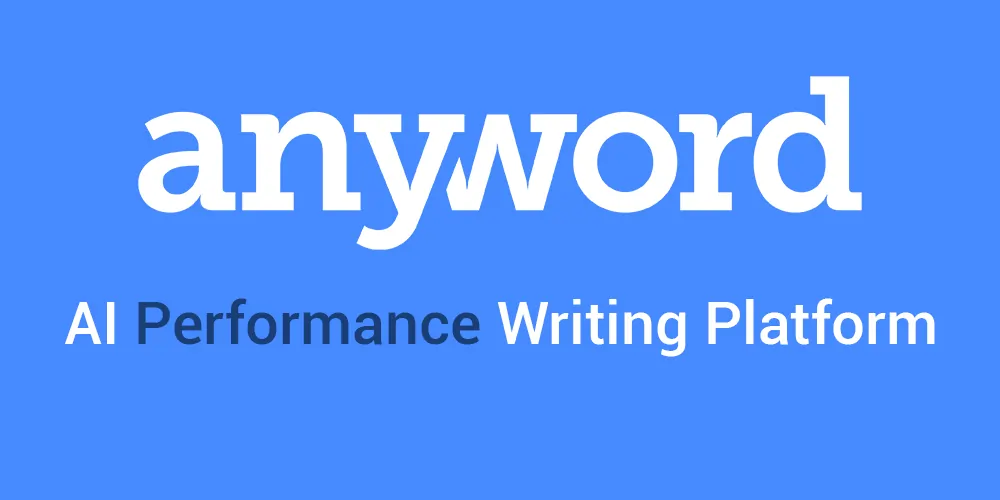Tired of staring at a blank page, wondering how to write content that both people and Google love? You’re not alone. In 2025, writers, marketers, and businesses are turning to SEO Writer AI tools to create content that doesn’t just read well, but also ranks high.
Think of it this way: traditional writing tools are like old maps, useful but limited. SEO Writer AI is more like Google Maps with real-time updates — it guides you with data, keywords, and SEO insights while still letting you drive the story in your own voice.
The result? High-quality, SEO-rich content that’s easier and faster to create.
And that’s exactly what this article is about. We’ll walk you through the 8 best SEO Writer AI tools of 2025, explain how they work, and help you decide which one fits your needs.
By the end, you’ll know not just what tools to use, but how to use them to boost your rankings, save time, and write content that truly connects with your audience.
What Is an SEO Writing AI Tool and How Search Engine Sees AI Content?

Understanding How Search Engines Evaluate AI Content
Search engines don’t just look at whether the text is ai generated content or written by human writers. They focus on content creation quality, relevance, and how well it matches user intent.
An ai content writer or ai article writer can help you generate content faster, but without the right structure, it may not satisfy search engines.
To do well, your seo writing should balance:
- Natural use of keywords from keyword research
- Proper meta tags and meta descriptions
- Correct article length and word count
- Use of relevant images to support blog content or social media posts
Think of it like this: ai writing tools are only as strong as the writing process behind them. If you just rely on an article generator tool or ai content generator, you may end up with text that feels generic.
But when you refine the draft, add your own words, and focus on seo optimized content, you create something useful.
For example, a free ai writer may give you a starting point, but it won’t replace the need to adjust tone and writing style for your audience.
Tools with ai powered seo optimization can guide you toward seo optimized blog posts, but the finishing touch comes from editing and aligning the draft with your wordpress website or marketing goals.
The bottom line: search engines like Google Search want to show results that offer real value. Whether you write articles by hand or use ai writing, your success depends on delivering seo rich content that builds trust, drives organic traffic, and supports your overall seo efforts.
AI Writing Tools vs. Traditional Writing Tools: Key Differences
Traditional Writing Tools
Traditional tools like Google Docs or basic text editors let you draft blog articles or long form content in a straightforward way. They are simple to use and give you full control of your writing style. But these tools don’t guide you with seo research, keyword data, or real time seo scoring.
Key traits of traditional SEO tools:
- Useful for drafting blog posts, product descriptions, or social media posts manually
- Give you freedom to write articles in your own words without outside influence
- Lack features like seo score tracking, plagiarism checker, or competitor analysis
- Depend fully on human writers for planning and optimization
AI Writing Tools
An ai writing assistant or ai article writer goes beyond simple drafting. These tools use artificial intelligence and ai powered seo optimization to help you generate content that is seo optimized and ready to satisfy search engines.
They are often designed to speed up the writing process while giving helpful insights.
Key traits of AI tools:
- Can act as an article generator tool to create content ideas or full blog content
- Suggest keywords and optimize meta descriptions, meta tags, and overall seo writing
- Use real time data for seo research and tracking performance
- Built-in features like plagiarism checker, ai detectors, and seo score analysis
- Help marketing agencies, freelancers, and brands scale content creation faster
The Balance Between the Two
While AI tools make it easy to generate content quickly, the best results come when you combine them with the creativity of human writers. Articles generated by an ai content writer still need editing to ensure high quality content, a unique brand voice, and user-focused seo rich content.
8 Must Try SEO Writing AI Tools That Will Boost Your Rankings

If you want to win the seo game in 2025, using the right ai writing tools is key. Some tools come with free plans, while others are paid with more advanced features. Let’s look at the best options.
Free AI Tools
1. Junia AI (offers a free trial for SEO-optimized blogging)

Junia AI helps you create content quickly with smart suggestions. It’s made for bloggers and businesses that want fast results.
Features:
- Creates seo optimized content in minutes
- Built-in ai copywriting options for headlines and meta descriptions
- Intuitive interface for smooth writing process
- Can also help overcome writer's block with content ideas
Best For: Beginners, bloggers, and small businesses testing AI for the first time
2. Writesonic (has a free plan with basic credits for AI content)

Writesonic is an ai writing assistant with a wide range of content options. From blog posts to product descriptions, it covers many needs.
Features:
- Article generator tool for blog content and social media posts
- SEO optimization tools for meta tags and descriptions
- Can draft ad copy and scripts for YouTube videos
- Offers content creation in multiple tones and styles
Best For: Writers, freelancers, and creators looking for a flexible free ai writer
Paid AI Tools
1. J6 Venture

J6 Venture is a professional ai content writer tool that focuses on accuracy and seo rich content.
Features:
- Supports seo research with keyword data
- Content generation for long form content and blog articles
- Built-in plagiarism checker and ai detectors
- User-friendly dashboard with intuitive interface
Best For: Marketing agencies and businesses with higher content needs
2. Clearscope

Clearscope helps you refine articles with real time data and keyword suggestions. It is known for improving search engine rankings.
Features:
- Detailed keyword research for seo writing
- Helps structure seo optimized blog posts
- Easy-to-read seo score for content creation
- Simple writing style guidance
Best For: Writers and teams that want high quality content that satisfies search engines
3. Surfer SEO

Surfer SEO is one of the most popular tools for seo optimization. It gives clear steps to improve your rankings.
Features:
- Content editor with seo score tracking
- Competitor analysis with keyword data
- Real time seo research for articles generated
- Suggestions for article length and structure
Best For: Professionals who want to fine-tune seo efforts and get more organic traffic
4. Frase

Frase is an ai content generator that saves time by giving you smart content briefs.
Features:
- Quick article generator tool for blog content
- AI writing assistant for content ideas
- Helps organize seo optimized content with outlines
- Offers insights based on google search results
Best For: Teams creating blog posts and long form content faster
5. Anyword

Anyword is built for conversion-focused content. It helps create content that speaks to your target audience.
Features:
- AI copywriting tool for ads, product descriptions, and landing pages
- Predictive performance score for seo rich content
- Options to adjust brand voice across blog articles
- Real time data support for content generation
Best For: Businesses looking to improve ads and persuasive blog content
6. Semrush Content Toolkit / Semrush Copilot

Semrush offers a powerful mix of seo research and ai writing features. It’s trusted by many professionals worldwide.
Features:
- Detailed keyword research with seo optimization tools
- Competitor analysis for blog articles and seo writing
- Built-in article writer and article generator options
- Integration with Google Docs and WordPress website
Best For: Marketing agencies and SEO teams who want advanced seo optimization
Choosing the Right AI Writing Tool: A Smart Comparison
Not every seo writer ai tool is built for the same type of user. Some are made for quick blog post creation, while others focus more on deep seo research. Here’s a clean comparison to help you choose
At the end of the day, the best tool is the one that matches your workflow and writing process. Use this comparison to find the balance between simplicity, scalability, and smart features.
Step-by-Step Guide: How to Use an SEO Writing Tool Effectively for Better Ranking

Using an SEO writer AI is not just about clicking a button to generate content. To see real ranking improvements, you need to follow a clear process that combines AI strengths with human editing. Below is a step-by-step framework to help you get the best results.
1. Start with Gathering SEO Data and Doing Keyword Research
The foundation of SEO writing begins with collecting the right keyword data. Instead of writing blindly, you first need to know what search engines expect and what users are searching for. This ensures your content creation aligns with search intent.
- Use reliable SEO tools
Tools like Surfer SEO, Semrush, or Clearscope help uncover high-volume and low-competition keywords. Always check all the features they offer—such as keyword difficulty, SERP analysis, and content suggestions—to build a stronger strategy. - Build keyword clusters
Instead of relying on a single keyword, create a cluster of related terms to guide your long-form content. This makes your article more relevant and improves topical authority. - Explore variations across platforms
Include keyword variations that people might search on Google Search, social media posts, or even YouTube videos. For example, if your topic is “AI content writer tools,” you don’t stop at just that phrase. - Related ideas like AI article writer, SEO optimized content, blog post ideas, or even AI image tools provide a broader roadmap for creating content that resonates with both search engines and users.
2. Generate Drafts and AI Articles with the Tool
Once you have your keyword research done, the next step is to generate content. An ai writing assistant can give you a quick draft, saving you hours of manual writing and helping you overcome writer’s block.
- Start with an article generator tool to create a basic outline.
- Use an ai content generator to suggest headings, subheadings, and content ideas.
- Let the ai articles tool expand bullet points into paragraphs or create short blog articles to test angles.
For instance, Writesonic or Junia AI can generate blog content with just a few inputs. But remember: these tools are a starting point. They give you the first draft, but you’ll need to refine it so it reflects your unique brand voice and not just machine text.
3. Refine and Edit in Your Own Words for High Quality Content
AI-generated content is fast, but it’s not always perfect. This step is where you step in to polish. Adding a human touch ensures your articles generated don’t sound robotic and are aligned with your goals.
- Review the writing style and make sure it fits your audience.
- Adjust the article length based on the depth needed. Short blog content might be fine for quick answers, but long form content ranks better for complex topics.
- Use a plagiarism checker or ai detectors to make sure your final draft is original and authentic.
Think of the AI as your assistant. It helps generate content quickly, but the final responsibility is yours. That’s how you ensure high quality content that balances SEO optimization with real value for readers.
4. Structure and Enhance for Better User Experience
Search engines reward not just words, but how you structure them. A well-organized blog post makes it easy for readers to scan, and easy for crawlers to understand.
- Break content into clear sections with H2s and H3s.
- Add relevant images, meta tags, and meta descriptions for better SEO score.
- Ensure smooth flow between sections so users don’t bounce.
If you’re writing on a WordPress website, use formatting plugins to improve readability. Adding visuals, bullet points, or even product descriptions for e-commerce content makes your blog content more engaging and strengthens your seo game.
5. Monitor Performance and Update Regularly
Publishing is not the end of the writing process—it’s the start. SEO takes time, and to stay ahead you need to track your progress and refresh content when needed.
- Use Google Analytics or Surfer SEO’s seo score tracker to monitor performance.
- Update blog articles with fresh real time data, keyword research, and new insights.
- Refresh meta descriptions and adjust word count if competitors are outranking you.
This step ensures your seo efforts continue paying off. Over time, updating ai articles keeps them ranking well and drives consistent organic traffic without starting from scratch every time.
Smarter Keyword Integration: How AI-Generated Drafts Boost Your SEO Strategy

AI-generated drafts are not just about saving time—they are powerful for keyword planning. When used well, they help you structure seo optimized blog posts, align with search engines, and increase organic traffic. Below are the key steps to make your keyword use smarter.
1. Start with an Article Generator to Create a Keyword-Rich Outline
An article generator tool can create a first draft that highlights where keywords should go. Instead of writing blindly, you get a keyword-rich outline that guides the entire writing process.
- Identify headings, subheadings, and bullet points with keyword slots.
- Generate content that matches your topic clusters.
- Use ai writing tools to map keyword flow across the blog post.
For example, if you’re writing blog content about ai copywriting, the generator can suggest keyword placement for intro, body, and conclusion. This way, your articles generated have a natural structure ready for optimization.
2. Insert Primary Keywords Naturally Into Headings and Subheadings
Headings are the strongest signals for search engines. By placing primary keywords in H2 and H3 tags, you guide both readers and crawlers. AI drafts make this process easier by showing where keywords can fit smoothly.
- Add your main target keyword to at least one H2.
- Sprinkle variations in subheadings without forcing them.
- Let the ai writing assistant suggest alternate phrasings to match search intent.
For example, instead of stuffing “ai article writer” everywhere, you could use “best ai content writer tools” in one heading and “ai articles for seo” in another. This satisfies search engines without hurting readability.
3. Use AI Drafts to Suggest Secondary and Long-Tail Keywords
AI writing assistants shine when it comes to discovering related terms. They can suggest long-tail keywords and secondary terms that you may not catch during manual keyword research.
- Look at keyword data from your tool and combine it with AI suggestions.
- Target queries like “how to generate content with AI” or “seo optimized content tips.”
- Include these naturally in your blog articles, product descriptions, or even YouTube videos.
This way, your ai generated content covers broader angles of the topic. It tells search engines that your blog post is complete and can rank for multiple related terms.
4. Balance Keyword Density to Avoid Stuffing
Keyword stuffing is one of the fastest ways to lose rankings. AI tools can track word count and keyword density in real time, giving you control over seo optimization.
- Maintain 1–2% density for most keywords.
- Spread terms evenly across intro, body, and conclusion.
- Use synonyms and natural language to avoid repetition.
For instance, if the ai content generator suggests “seo optimized content” too often, replace it with “seo rich content” or “content generation for rankings.” This creates balance and makes your long form content easier to read.
5. Align Keyword Placement With Search Intent and SEO Data
Not all keywords belong everywhere. Matching placement with search intent makes your writing more relevant. AI drafts help align content with what users want and what search engines reward.
- Put informational keywords in blog content or guides.
- Place transactional terms in product descriptions or landing pages.
- Use competitor analysis to find gaps in keyword usage.
For example, ai writing tools may show that your competitors use “ai content writer” in meta descriptions but not in subheadings. Adding it smartly gives your content an edge. Over time, this structured keyword use improves seo score and drives consistent traffic.
What the Future Holds for SEO Writing AI Tools (and Your SEO Strategy)

SEO writing AI is moving fast. From real-time SEO scoring to smarter keyword use, these tools are reshaping how content creation works. But while technology evolves, one thing is clear: strategy and quality will always matter more than shortcuts.
The Rise of Real-Time SEO Scoring in AI Writing Tools
One of the biggest changes we’ll see is real-time SEO scoring. Instead of guessing whether your content is optimized, AI tools now guide you as you write.
- Live seo score updates as you add headings, meta tags, or keyword data.
- Word count tracking and article length suggestions for better rankings.
- Instant checks for keyword density, content gaps, and even plagiarism checker alerts.
This is a game-changer for marketing agencies, freelancers, and businesses. Instead of waiting for tools to run audits later, an ai writing assistant can show how to satisfy search engines right in the writing process. It means less back-and-forth, fewer mistakes, and more focus on creating high quality content.
Why High Quality Content Will Still Be the Key Ranking Factor
Even as AI evolves, search engines still value depth, originality, and usefulness. AI content generators can speed things up, but real success comes from combining AI support with human insight.
- High quality content attracts organic traffic and builds trust.
- Google search algorithms check for originality through ai detectors.
- Human writers ensure articles generated reflect brand voice and context.
AI can handle repetitive seo efforts like competitor analysis or keyword placement. But things like storytelling, boosting topical authority, and user experience will always need a human touch. This is why seo writing remains both technical and creative.
Will SEO Writing AI Tools Replace Human Content Writers?
This is the question many ask, but the answer is more balanced than it seems. AI writing tools are not here to erase human writers—they are here to support them.
- AI speeds up content generation, keyword research, and blog content drafting.
- Humans refine the writing style, add relevant images, and keep the brand voice consistent.
- Together, this mix beats writer’s block and keeps seo optimization strong.
Think of it this way: an article generator tool may produce a draft in minutes, but without human editing, it may miss context or tone. The future belongs to those who use ai writing tools as partners—not replacements.
That’s how you’ll win the seo game long-term. And as each ai model improves, these tools will only get better at supporting writers while still leaving space for human creativity and strategy.
FAQ'S

1. Is SEO Writing AI Tools suitable for beginners in content writing?
Yes. Most SEO Writing AI tools are beginner-friendly, offering guided workflows and templates. Even without deep SEO knowledge, you can create optimized drafts quickly.
2. Can AI writing tools handle multiple languages for SEO content?
Yes, many tools support multilingual content. However, the quality varies by language, so always review outputs for accuracy and cultural relevance.
3. Do AI writing tools guarantee top rankings on Google?
No. They can improve your chances by creating SEO-rich content, but rankings depend on many factors — backlinks, domain authority, and overall SEO strategy.
4. How secure is the data I input into AI writing tools?
Most premium tools use strong encryption and comply with GDPR/CCPA. Free tools may have limited privacy controls, so avoid inputting sensitive data.
5. Can SEO Writing AI tools generate content for niche industries?
Yes. Many tools allow customization with industry-specific keywords and tone. For highly regulated fields, human review is essential.
Conclusion
You’ve made it this far, which already shows you’re serious about improving your SEO game. The landscape of digital content is always shifting, and staying ahead means being open to smarter tools, sharper strategies, and a willingness to experiment.
Instead of waiting for change to shape your results, take the next step today: test, learn, and refine your own approach to SEO writing. Small improvements made consistently will add up to big wins.
Your journey doesn’t stop here—use what you’ve learned as a starting point to explore, adapt, and build a content process that truly works for you.

.jpg)
.jpg)
.jpg)
.jpg)
.jpg)
.jpg)
.jpg)
.jpg)
.jpg)
.jpg)
.jpg)
.jpg)
.jpg)
.jpg)
.jpg)
.jpg)
.jpg)
.jpg)
.jpg)
.jpg)
.jpg)
.jpg)
.jpg)
.jpg)
.jpg)

.png)
.png)
.png)
.png)
.png)
.png)
.jpg)
.jpg)
.svg)

